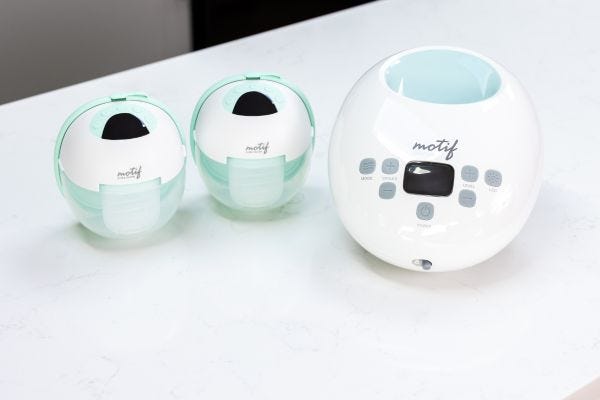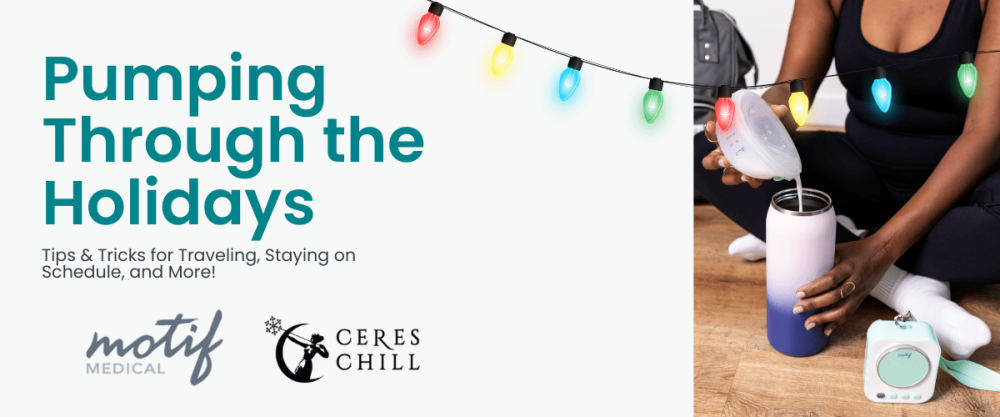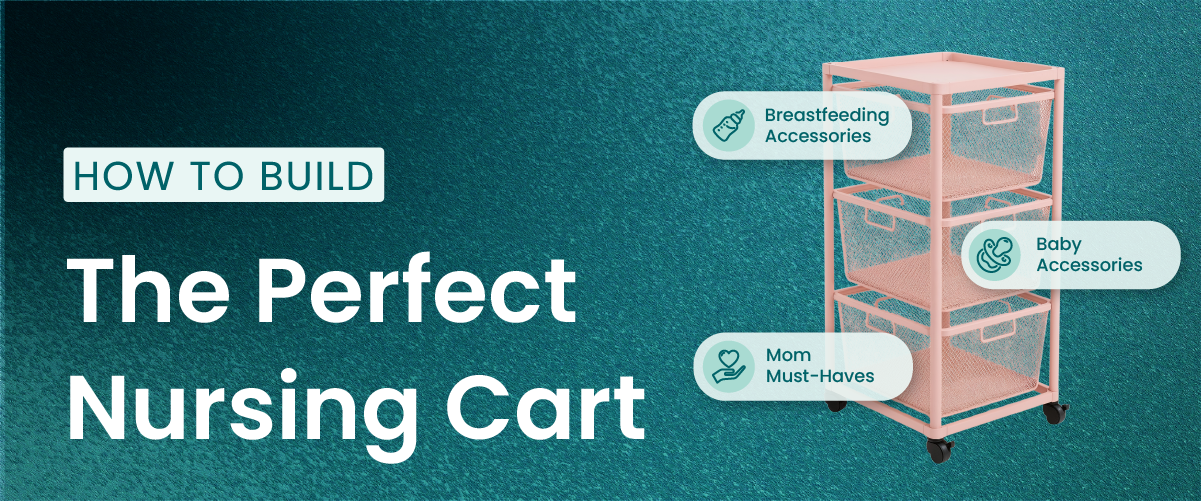Prep During Pregnancy
Becoming a parent of multiple is an experience that is often described as beautiful but extremely challenging. Breastfeeding more than one baby is absolutely possible, but it comes with its own unique set of challenges. All the aspects of caring for a newborn are literally multiplied - more diapers, more outfit changes, more crying, more feedings, more baths, more baby gear, more snuggles, and more love. Support, education, and determination can go a long way toward meeting your goals when it comes to breastfeeding twins, triplets, or more! In this guide, we’ll take it step by step from preparing during pregnancy to establishing a manageable feeding plan.
Meet with an IBCLC (International Board Certified Lactation Consultant) who is experienced with breastfeeding multiples. Normally, I’d recommend taking a breastfeeding class, which still may be helpful, but it’s difficult to find one that really dives into all the ins and outs of breastfeeding multiples. A safer bet is to meet one-on-one with an experienced IBCLC who can give you info that is specific to your situation.
An IBCLC can help with:
- Identifying specific risks that might impact breastfeeding
- Teaching the fundamentals of how milk-making works
- Breast pump selection and setup
- Flange fitting
- Positioning
- Feeding routines
- Alternative plans in case one or more of your babies isn’t latching well.
- Guidance for managing milk supply
- AND SO MUCH MORE!
Discuss your desire to breastfeed with your healthcare provider. It’s important to understand that what happens during pregnancy and birth impacts breastfeeding. The following topics are important to discuss with your healthcare provider as you prepare for your babies to be born.
- Colostrum collection is a popular topic among most pregnant women, but especially among those expecting multiples. Talk with your provider about whether prenatal colostrum collection is safe for you. Hand expression is the most effective way to express and collect colostrum. Many mothers feel a sense of security knowing they have colostrum collected and stored ahead of time for their babies.
- Early skin-to-skin contact is beneficial for getting breastfeeding off to a good start. It helps babies regulate their blood sugar, respiration, temperature, heart rate, and overall stress levels. Talk with your provider about how to incorporate skin-to-skin in your birth plan. In many cases, immediate skin-to-skin is possible even after a cesarean birth. It’s important to note that skin-to-skin contact is still highly beneficial even if it can’t happen immediately after birth.
- Oral suctioning should only be done if medically necessary. Unnecessary or aggressive suctioning can cause oral aversions that interfere with breastfeeding.
- Discuss what will happen if your babies need to go to the NICU. Knowing the process ahead of time can help reduce stress later. I recommend assigning your partner or another caregiver to accompany the babies to the NICU if possible. Make sure you and your partner are on the same page when it comes to important medical decisions that may need to be made regarding your babies’ care. Take notes whenever you discuss medical care with your babies’ care team. Be clear about your desire to breastfeed and request that the staff let you know as soon as you are able to hold your baby's skin-to-skin and participate in feedings.
Identify your support circle. You WILL need help. Long before your babies arrive, line up your support team. Include your partner, friends, family, neighbors, and professionals. Don’t discount the importance of community during the postpartum period. Find a local or online support group for mothers of multiples. You can’t have too much support! Ways people can help include:
- Providing diapers, wipes, and other supplies
- Taking care of household duties like mowing the lawn, cleaning, doing the laundry, and picking up grocery orders
- Dropping off meals for you and your family
- Holding and soothing one baby (or more) while you nurse another
- Caring for your babies while you rest
- Helping you manage multiple car seats, a diaper bag, and other gear when you go to doctor appointments with your babies
- Provide professional care such as lactation support, postpartum doula support, pelvic floor therapy, and more.


Establishing Milk Supply
Early and frequent milk removal are the keys to building a milk supply. If one or more of your babies is not latching well, it’s important to begin pumping and hand expressing right away. Pumping for 15-20 minutes for any missed nursing sessions signals your body to produce milk. Hand expression is the most effective way to remove colostrum, so it is ideal to follow pumping sessions with a few minutes of hand expression. Your colostrum can be collected and fed to your babies via a spoon, syringe, cup, or using a tube alongside your finger (finger feeding).
Use a high-quality breast pump. While you may have access to a hospital-grade, multi-user pump, many single-user pumps (such as the Motif Luna) perform just as well as heavier and bulkier multi-user pumps. Look for a pump that provides 270mmhg or higher of suction, is double-electric, has independent cycle and vacuum adjustments (more customization), and has a wide range of flange sizes available.
Flange size is important for pumping comfort and output. For most mothers, adding 0-3mm to their nipple size produces the best results. Remember that pumping shouldn’t hurt! A good fit will allow only your nipple to enter the flange tunnel, should be comfortable, and should result in well-drained breasts.
Continue skin-to-skin to help boost milk production. Skin-to-skin helps you sync up with your babies so you can learn their early hunger cues. It also boosts oxytocin, the hormone responsible for triggering letdown (the release of milk from your breasts).
Use wearable or portable pumps strategically. While most mothers of multiples find it immensely helpful to incorporate a portable breast pump (Motif Roam) or wearable breast pump (Motif Aura Glow), it’s ideal to wait until your milk supply is well-established before adding these types of pumps to your routine.
Positions for Breastfeeding Multiples
Double Football Hold: Each baby is held in the football position on either side of your body. This is a great position to use during the newborn period.
Double Cradle: Cradle one baby in your left arm and one in your right with their legs crossing in front of you.
Laid-Back Nursing: Recline, using pillows to support your shoulders and arms. Lay your babies along your torso allowing gravity to keep your babies close to you.
***No matter which breastfeeding position you use, it’s usually easier to latch the baby that needs more help first, then latch the baby who has an easier time latching second.
Logistics of Breastfeeding Multiples
While feeding on-demand is recommended as the ideal way to feed a breastfed infant, it may be necessary to make some modifications when breastfeeding multiples.
Newborns should be fed at least 8-12 times in 24 hours going no more than 2-3 hours between daytime feedings with a single 3-4 hour stretch at night. You’ll need to wake your babies if they are not waking on their own to eat often enough. If your babies were born preterm, are small for gestational age, or have other medical concerns, your neonatal care team may recommend a specific feeding schedule
Tandem feeding is when more than one baby is fed at the same time. This method of feeding tends to save time. To get your babies feeding at the same time, you may need to follow the lead of the baby with the stronger hunger cues and wake the other baby (or babies) so they can be fed simultaneously.
If you have more than two babies, make sure each one has an equal opportunity to be first to the breast. Babies who nurse first tend to get more milk than babies who nurse after one of their siblings has already eaten from the same breast. For example, if Baby A and Baby B are always fed first, and then Baby C is offered the breast, Baby C may not be getting as much milk as the other two babies.
Alternate breasts. Make sure each baby gets an equal amount of time to nurse from each breast as this helps balance stimulation and milk production. This will also help ensure each baby gets adequate milk even if one breast produces less milk (which is common).
aced Bottle Feeding is essential if any of your babies will be using a bottle. It’s not uncommon for parents of multiples to feed their babies using a combination of direct breastfeeding and bottle feeding. Using a Paced Bottle Feeding technique helps prevent overfeeding and can also help prevent the development of a bottle preference.
Exclusive Pumping may be the best way to get breast milk into your babies if they are preterm, are in the NICU, or have feeding challenges at first. It is best to work with an IBCLC to help create a personalized pumping plan for your situation. Keep in mind that it can take your body a bit longer to increase milk production if your babies are born early.


Consistency is key, so try not to be discouraged if your supply increases slower than you were expecting. It’s also important to remember that even if your babies don’t start out nursing, it is possible to help them learn to latch later. Helping a baby latch after a period of exclusive bottle feeding takes specialized skill, so be sure to seek out an experienced IBCLC who is familiar with this unique situation.
Encouragement From an IBCLC
Each breastfeeding journey is unique, and breastfeeding multiple adds extra challenges. Whether you exclusively breastfeed, pump and bottle-feed, supplement with formula, or mix all three, you’re doing an incredible job! Breastfeeding doesn’t have to look one certain way to be successful. Breastfeeding multiples is possible, and it’s ok if there are twists and turns along the way. Breastfeeding multiples is a marathon, not a sprint……be gentle with yourself, mama!
Information provided in blogs should not be used as a substitute for medical care or consultation.








